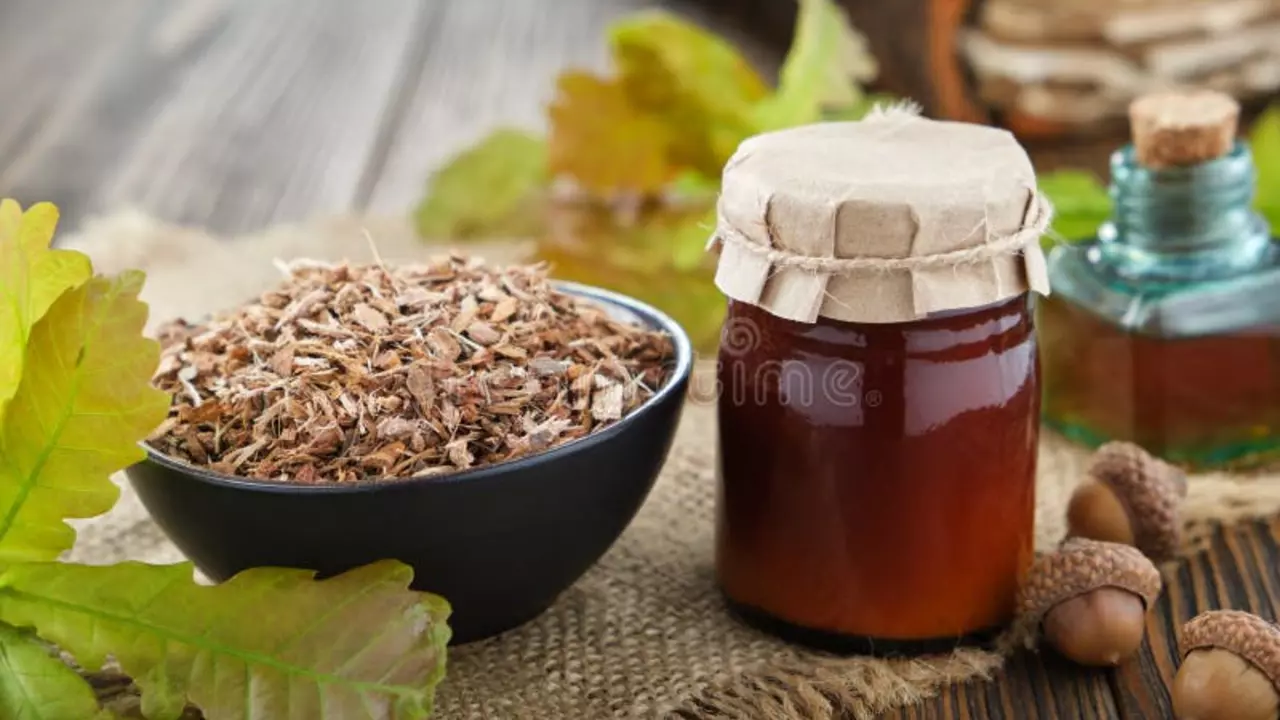Oak Bark: Uses, Benefits, and Safety
Oak bark has been used for centuries as a simple, effective herbal remedy. People rely on it as an astringent, for sore gums, wound care, and short-term digestive issues. This page gives straight facts on what oak bark does, how to use it, and what to watch out for.
How oak bark works
The main active compounds in oak bark are tannins and some flavonoids. Tannins tighten and dry tissues, which helps stop minor bleeding, reduce mucus, and calm irritated skin. That’s why oak bark shows up in traditional mouthwashes, hemorrhoid treatments, and topical washes. Researchers note its astringent and mild anti-inflammatory actions, although modern studies are limited compared with common drugs.
How to make oak bark tea and common uses
Want to try oak bark? A basic decoction is easy: use 1–2 teaspoons of dried oak bark per cup of water. Simmer 10–15 minutes, strain, and cool. For mouth rinses or short-term diarrhea relief, drink a small cup once or twice a day. For skin wounds or hemorrhoids, soak a clean cloth in cooled decoction and apply for 10–20 minutes. Some people prefer a tincture; follow supplier directions for dosing. Don’t use oak bark tea every day for weeks—short courses are safest.
Useful, practical uses include: rinsing irritated gums, easing minor surface bleeding, calming inflamed skin, and short-term control of watery diarrhea. It’s a handy option when you need a local astringent, not a substitute for medical care when infections or serious bleeding are present.
Choose bark from known oak species like Quercus alba or Quercus robur and buy from reputable herbal suppliers. Avoid bark from treated wood or unknown urban trees—pollutants and pesticides can concentrate in bark.
Start with small amounts to test tolerance. If you use oak bark topically, do a patch test on a small skin area and wait 24 hours for a reaction. For mouth rinses, spit it out—don’t swallow large quantities.
Possible downsides: tannins can reduce iron absorption, so avoid using oak bark alongside iron supplements or if you have iron-deficiency anemia. Internal use may cause constipation, nausea, or stomach discomfort in some people. Pregnant or breastfeeding women and young children should avoid internal use unless a healthcare provider approves. If you take blood thinners or other medicines, check with a pharmacist—oak compounds can affect drug absorption.
Final tips: use oak bark short-term and for local problems. If symptoms persist, worsen, or you see signs of infection (fever, increasing redness, pus), get medical care. When you buy oak bark, pick quality sources and follow dosing instructions. A little caution makes this old-school remedy useful and safe for simple needs.
When to see a doctor: don't use oak bark for heavy bleeding, high fever, or severe infections. If diarrhea lasts more than 48 hours or you get dehydrated, see a doctor. Store dried bark in an airtight container in a cool, dark place. Properly stored, dried oak bark keeps well for 1–2 years; discard if moldy or smells off.

Unveil the Secret to Optimal Health with the Power of Oak Bark
Jul 1, 2023, Posted by Mike Clayton
In my latest blog post, I delve into the world of oak bark and its surprising health benefits. The secret to optimal health may just lie in this humble tree's bark, which is packed with numerous healing properties. From its anti-inflammatory and antiseptic qualities, to its ability to aid in digestion, oak bark is a hidden gem in the realm of natural remedies. I explore how to incorporate it into your daily routine, and discuss the scientific research supporting its use. Who knew achieving optimal health could be as simple as a walk in the woods?
MORESEARCH HERE
Categories
TAGS
- treatment
- online pharmacy
- dietary supplement
- side effects
- health
- dietary supplements
- health benefits
- online pharmacy Australia
- medication adherence
- medication safety
- thyroid disorders
- treatment option
- calcipotriol
- blood pressure
- erectile dysfunction
- closer look
- optimal health
- sexual health
- bacterial infections
- nutrition
